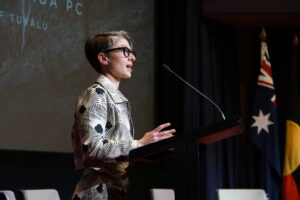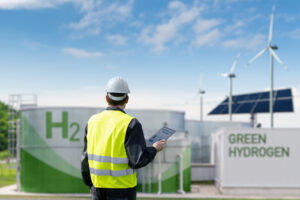The inevitable shift from coal to clean energy is becoming big news in regional electorates and across the country at this election.
Local member and Deputy Prime Minister Barnaby Joyce has endorsed the White Rock Wind Farm in Glen Innes, saying, “if we are going to go down the path of renewables and I believe we should, then we need to get the best benefit for it into the seat of New England.”
But his enthusiasm is hard to read. On the day of the opening ceremony he complained, “These are the cards I’m dealt” and he once asked, “What is this insane lemming-like desire to go to renewables going to do to our economy?”
Polling commissioned by The Australia Institute finds that 72% of respondents in New England support Australia going the full Monty – a transition to 100% renewables. This would have been unthinkable at the last election in 2013.
62% oppose the Shenhua coal mine on the Liverpool Plains and Mr Joyce recently conceded that the business case for big new coalmines “no longer stacks up”. This is a welcome change from Mr Joyce, who has been a loyal defender of coal and forthright critic of clean energy.
Last year was the turning point when investment in renewables overtook fossil fuels. According to the Frankfurt School of Business, renewables dominated electricity investment in 2015. New renewables accounted for over half (53.6%) of new generation capacity and more than a quarter of a trillion dollars (US$286 billion) of investment.
But under the policies of the Coalition government, while international investment and jobs in renewables grew – in Australia we went backwards.
The renewable energy turning point is here, so in this election anything is possible. All parties and candidates have an opportunity to take the lead, whatever their political stripe.
First published in the Northern Daily Leader – here
Related documents
Between the Lines Newsletter
The biggest stories and the best analysis from the team at the Australia Institute, delivered to your inbox every fortnight.
You might also like
The Climate Crisis is an Integrity Crisis | Polly Hemming
I am starting my address to this year’s summit in the exact same way that I started last year’s address. Because it is just over a year since I delivered these same words, which aren’t actually my words. They are the words of our Climate Change Minister, and they provide a baseline of sorts for what progress has been made in that time.
Why are gas companies trying to sell us hydrogen?
The hydrogen dream has become widespread in the Australian climate conversation: apparently, with it, we’re going to decarbonise Japan, Korea, and the world! Is this ambitious vision a genuine step towards a greener future or merely a diversion from ongoing fossil fuel expansion?
Labor’s pledge to depoliticise the public service is undermined by the government only hearing what it wants to hear on climate change
While last year’s robodebt royal commission exposed a shocking lack of ethics among senior ranks of the Australian public service, the systemic condition still largely seems to be regarded as an aberration.


